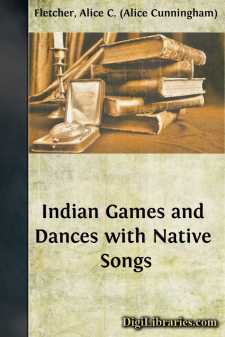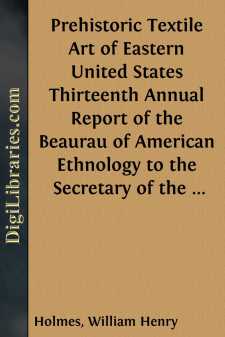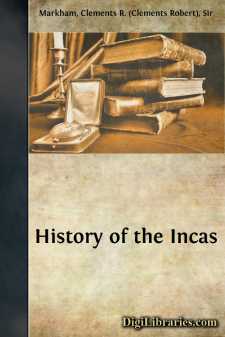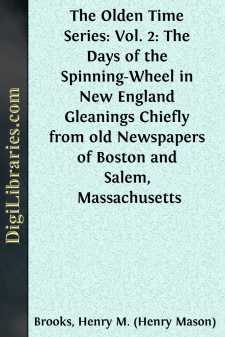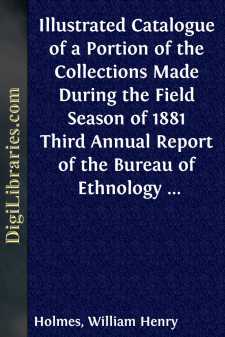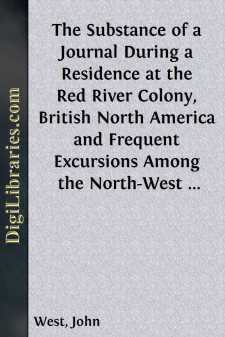History
- Africa 30
- Americas (North Central South West Indies)
- Ancient 68
- Asia 58
- Australia & New Zealand 8
- Canada 41
- Caribbean & West Indies 1
- Civilization 20
- Eastern Europe 12
- Europe 310
- Expeditions & Discoveries 60
- General 77
- Historical Geography 1
- Jewish 9
- Latin America 3
- Medieval 8
- Middle East 14
- Military 248
- Revolutionary 8
- Study & Teaching 5
- United States 353
- Western Europe 56
- World 13
Americas (North Central South West Indies) Books
Sort by:
INTRODUCTION The adaptations from Indian ceremonies and sports here offered will enable those who take part in them to follow in happy mood some of the paths of expression that were opened long ago by thoughtful men and women as they lived, worked and played on this land in undisturbed intimacy with nature. Some of the thoughts bred of this intimacy find their expression in these dances and games, and...
more...
SCOPE OF THE WORK. About the year 1890 the writer was requested by the Director of the Bureau of Ethnology to prepare certain papers on aboriginal art, to accompany the final report of Dr. Cyrus Thomas on his explorations of mounds and other ancient remains in eastern United States. These papers were to treat of those arts represented most fully by relics recovered in the field explored. They included...
more...
INTRODUCTION. The publication of the text of the Sarmiento manuscript in the Library of Göttingen University, has enabled the Council to present the members of the Hakluyt Society with the most authentic narrative of events connected with the history of the Incas of Peru. The history of this manuscript, and of the documents which accompanied it, is very interesting. The Viceroy, Don Francisco de...
more...
LAKE OF TACARIGUA. HOT SPRINGS OF MARIARA. TOWN OF NUEVA VALENCIA DEL REY. DESCENT TOWARDS THE COASTS OF PORTO CABELLO. The valleys of Aragua form a narrow basin between granitic and calcareous mountains of unequal height. On the north, they are separated by the Sierra Mariara from the sea-coast; and towards the south, the chain of Guacimo and Yusma serves them as a rampart against the heated air of...
more...
CHAPTER I. 1800-1825. Commencement of the Nineteenth Century.—Slave Population of 1800.—Memorial Presented to Congress calling Attention to the Slave-trade to the Coast of Guinea.—Georgia cedes the Territory lying West of her to become a State.—Ohio adopts a State Constitution.—William Henry Harrison appointed Governor of the Territory of Indiana.—An Act of Congress prohibiting the...
more...
CHAPTER I HOW SLAVERY GREW IN AMERICA An English traveler, riding along the banks of the Potomac in mid-July, 1798, saw ahead of him on the road an old-fashioned chaise, its driver urging forward his slow horse with the whip, until a sharp cut made the beast swerve, and the chaise toppled over the bank, throwing out the driver and the young lady who was with him. The traveler—it was John Bernard, an...
more...
THE DAYS OF THE SPINNING-WHEEL IN NEW ENGLAND. * * * * * WITHIN the last few years many young ladies have searched country houses or ransacked old garrets to find spinning-wheels, which, like old chairs, tall clocks, and warming-pans, have now become objects of curiosity and interest to those who take a fancy to antique articles. It has become fashionable to have these things to adorn our Queen Anne...
more...
INTRODUCTORY. Mr. Palmer began his explorations early in July, 1881, and continued with marked success until the end of the year. He first paid a visit to the Cherokee Indians of North Carolina, and collected a large number of articles manufactured or used by this people, besides a number of antiquities from the same region. From Carolina he crossed into Tennessee, and began work by opening a number of...
more...
The conditions which govern the Indian's occupation of his Reserve are, probably, so well known, that any extended reference under this head will be needless. He ceded the whole of his land to the Government, this comprising, originally, a tract which pursued the entire length of the Grand River, and, accepting it as the radiating point, extended up from either side of the river for a distance of...
more...
by:
John West
DEPARTURE FROM ENGLAND. ARRIVAL AT THE ORKNEY ISLES. ENTER HUDSON'S STRAITS. ICEBERGS. ESQUIMAUX. KILLING A POLAR BEAR. YORK FACTORY. EMBARKED FOR THE RED RIVER COLONY. DIFFICULTIES OF THE NAVIGATION. LAKE WINIPEG. MUSKEGGOWUCK, OR SWAMP INDIANS. PIGEWIS, A CHIEF OF THE CHIPPEWAYS OR SALTEAUX TRIBE. ARRIVAL AT THE RED RIVER. COLONISTS. SCHOOL ESTABLISHED. WOLF-DOGS. INDIANS VISIT FORT DOUGLAS....
more...


